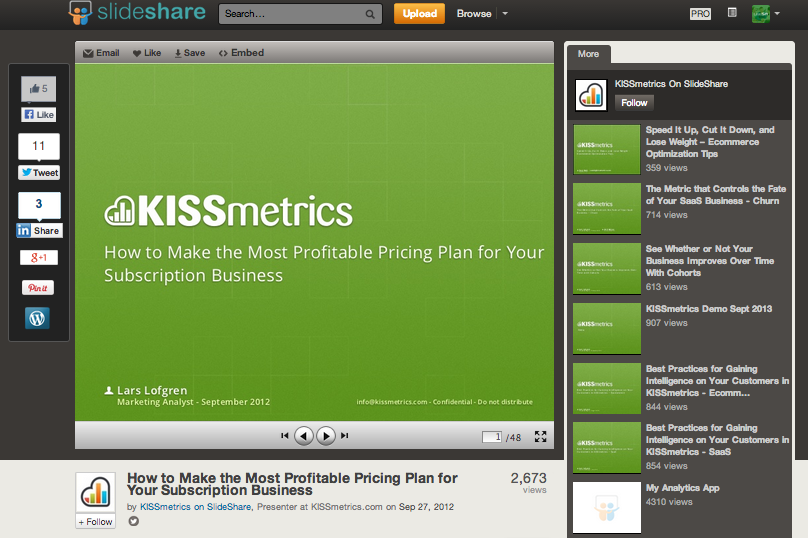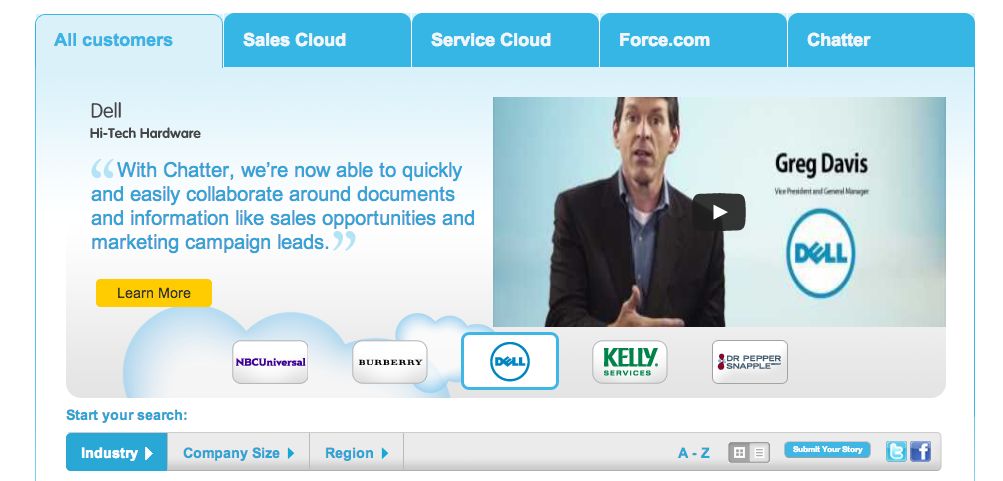I don’t have to tell you that content is changing the way we do business. I don’t have to tell you the benefits of using content to help your business stand out and drive meaningful results. So why not just get right to it and talk about some types of content that can help you drive sales?
Creating an effective content strategy isn’t easy but it’s not impossible. For me, the most important factor in a content marketing strategy is our ability as marketers to help a business sell. When working in the enterprise, content marketing is even more important as it plays a role in your ability to arm your sales team with the tools they need to succeed.
So how can you help your sales team do their job? You offer up content that helps them nurture and close leads. It’s really that simple. Here’s a few types of content you can start developing that will allow sales to get their prospects further down the funnel and show your boss how you’re making an impact on the bottom line.
1. Quality Webinars
If you’re looking to execute a content marketing initiative that can drive an increase in prospects to your sales team, consider the power of webinars. A webinar is an online presentation where hundreds or thousands of people can tune in and watch you deliver a presentation or demo online. The attendees typically sign up for the webinar in advance, allowing you to capture their email and name prior to the webinars delivery.
A series of webinars can act as a great lead generation tactic for brands that are looking to fill their funnel. The key to attracting the interest of potential prospects is the delivery of webinars that are built on insights and information that your target audience seeks. For example, the folks at Kismmetrics are a marketing software and have a target audience that consists of growth hackers, marketing strategists and entrepreneurs in the tech scene. As such, they create webinars that deliver insights and information that this audience finds relevant with topics like Best Practice for Gaining Customer Intelligence or How to Make The Most Profitable Pricing Plan for Your Subscription Business.
Once you’ve come up with the idea for the webinar, it’s time to start attracting sign ups and ensuring they actually show up. Depending upon the nature of your webinar, you can use various platforms to generate sign ups. For professional courses as an example, you can use LinkedHelper.com to run chatbot campaigns on LinkedIn or run ads on Facebook. Last year, I ran a webinar series over the course of two or three months and while the first session had over 150 attendees, the sessions thereafter were more challenging to keep attendance high. One strategy that I found worked well was taking a few minutes after the webinar to send emails and chat directly with a few attendees. It allowed me to build a closer connection with them and ultimately increase the chances of having them come back.
KISSmetrics has gone on record to express that their webinars have generated an average of $13,000 in sales opportunities each. Wade Foster wrote a post on how KISSmetrics increased their webinar signups by 1000% that I strongly recommend you check out for more info.
2. Presentation Materials
“Can you send me a deck?” Six words that can be a sales professionals nightmare. It’s not rare for a prospect to make this request with the intent of selling your product to upper management on your behalf. It’s a pride thing but can also be a disaster if the deck isn’t built in a way that can stand on its own.
Every enterprise startup should have a pitch deck that can be shared with clients, prospects, partners and investors to communicate clearly what they do. When you develop this deck, you should consider the three messages that are important to communicate your value proposition effectively. If you’re unsure about how to structure it, there are plenty of great pitch deck examples out there to take inspiration from. When creating a sales deck you should consider (1) The Pain (2) The Gain and (3) The Logic (Tweet This).
- The Pain: This is the problem they have but might not see.
- The Gain: These are the results of using your product.
- The Logic: This is exactly how you create value and drive results.
If you are still not sure your pitch deck is optimized, consider hiring pitch deck consultants to decrease pitch deck rejection rates and avoid common mistakes.
3. Valuable Video Content
Time is money. So as a marketer, you should strive to save your sales teams time as much as possible. Create content that answers the questions that your customers are known to have so they don’t have to call their sales rep when looking for a solution. When dealing with software, it’s great to use explainer videos to demonstrate how to use your product and how to accomplish various tasks.
In the examples above, you can find three videos from the folks at Marketo. In these videos, they offer examples of how to use their product from a high level perspective while also showing how to accomplish specific goals. Instead of having to give a customer a one-on-one demo, these videos can be shared with customers after signing up for Marketo and act as a resource when they’re unsure about something.
Another brand that does this well is the folks at MailChimp. A quick look at their YouTube page or even a quick Google search will offer up a handful of video tutorials on how to accomplish different goals. Whether you want to learn how to separate your mailing list into groups or how to send an A/B test through their platform, their YouTube channel is filled with valuable content that saves their sales team & users both time and money.
4. Case Studies
Can you really talk about Enterprise software without mentioning Salesforce.com? While they aren’t the sexiest technology company on the market, they are without question one of biggest and most successful. You don’t have to spend too much time on their website to find a few examples of how they use content marketing to stand out and drive real results for their sales team.
Similar to Salesforce, case studies aren’t always the most sexy and exciting type of content that a marketer can create. Yet, it’s without question one of the most effective parts of a sales tool kit in getting a customer to go from a maybe to a yes. Case studies showcase your product in action and use real life examples to demonstrate how you can turn opportunities into results.
If you do a quick search for Salesforce case studies, you’ll be met with a wide range of content that hits a wide range of audiences. You can filter case studies by industry, company size and even the region in which the company operates. Establishing this type of customization allows for potential leads and prospects to have content delivered to them that is more closely aligned with their interests, needs and threats. Additionally, having a backlog of case studies also makes it easy for you to sell to a customer who is skeptical of the results.
5. Content Worth Sharing
In a 2012 content marketing benchmark report from MarketingProfs and Content Marketing institute, it was identified that the largest challenge for brands (41% of them) is “producing the kind of content that engages prospects and customers.” Not only is creating this content challenging, but it’s also the most effective. It’s a way to connect with your audience, share your story and ultimately have your story shared with new people and new prospects. So how do you create content that’s worth sharing?
No one can really predict how viral a piece of content will be, but we can look at the past to predict the future (tweet this). Wharton University professor Jonah Berger has done an excellent job researching and defining what elements are often found in content that gets shared. His now highly regarded reports started as a joint paper with Katherine Milkman called What Makes Online Content Go Viral?, where they found that online content often went viral when: (1) it was positive (2) evoked strong emotion and (3) was practically useful.
As you create your content plan, ask yourself if the stories and content you’re planning to write meet this criteria. Ensure that your infographics are able to give your audience a takeaway that can be used in their job and that your ebooks give hope for positive and meaningful results. Sure, it seems simple but it’s really one of the most impactful ways that you can consistently create great content. It’s about focusing on your audience and really understanding what they need and what they want. If you can do that, you can create content worth sharing and stand out instead of blending in.
These are just a few content efforts that I’ve used to drive meaningful results for myself and clients. I hope you can use these examples as you continue looking to drive results for your business and that they will help you achieve your goals and objectives. If you want more tips, check out my upcoming book, Stand Out; The Entrepreneurs Guide to Content Marketing as I elaborate on these insights and more.
So what do you think about the tactics above? Are there any other tactics that we should all use?



